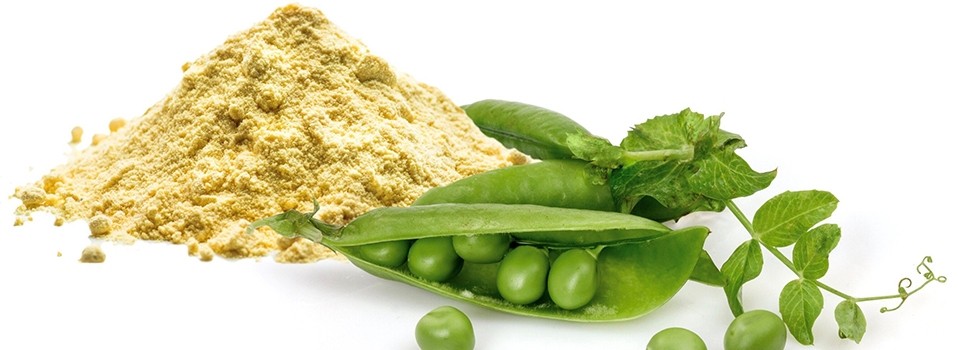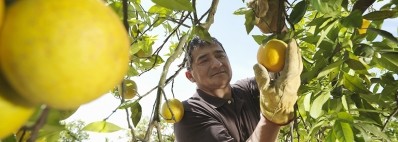Promotional Features
Why peas may hold the key to Asia’s growing plant-based beverage market
Plant-based beverages are fast emerging as a preferred alternative to dairy for consumers around the world. The trend, having upended the US dairy market, is gaining traction in Asia as consumers seek out products that are aligned with their ethical and environmental values and make no compromises on taste. Cargill created the pea protein Radipure to help manufacturers develop products that meet and exceed those high expectations.
The shift from dairy to plant-based beverages has arguably been most dramatic in the US. From 2010 to 2019, per capita consumption of fluid milk in the US fell by 17%, continuing a downward trend that began in the mid-70s.1,2 In 2018, milk sales fell by $1.1bn.3 The downward trend is forecast to continue until at least 2027 and has already claimed victims, with America’s biggest milk producer and one of its chief rivals both filing for bankruptcy around the start of 2020.4,5
An accelerating switch to plant-based beverages is one of the key drivers of falling demand for milk. Starting in 2012, US sales of non-dairy milks jumped by 61% in five years, creating a market worth more than $2bn.6 Most dairy CEOs polled by McKinsey late in 2018 predicted continued growth in plant-based beverages.7
Asia’s place in a changing dairy market
Today, the shift from dairy to plant-based beverages in Asia is at an earlier stage, giving companies an opportunity to gain market share ahead of the sort of explosive growth seen in the US. There are reasons to think the Asian market is primed for such growth.
As happened in the US, a growing proportion of consumers in Asia are becoming worried about the ethical and environmental implications of consuming animal products. One survey found that one third of Asian consumers are often influenced by how ethical, environmentally friendly and socially responsible a product is when making purchasing decisions.8
Those considerations are translating into new buying habits. In 2018, almost one quarter of people polled in Hong Kong described themselves as flexitarian, up from closer to one fifth in 2016.9 In the US and other parts of the West, the rise of veganism, vegetarianism and flexitarianism is intertwined with soaring demand for plant-based beverages.
With many plant-based beverages positioned as premium products in Asia, the category is also set to benefit from rising income levels across the region. In Indonesia, Malaysia, the Philippines, Thailand and Vietnam an additional 50m people are tipped to join the middle class by 2022, creating a social group with $300bn of disposable income.10
Some of that additional disposable income looks set to swell the already sizable Asian market for plant-based beverages. Soy is currently the most widely consumed plant-based beverage in Asia, with a market value of $4.7bn in 2019.11 Led by growth in China, Taiwan and Thailand, sales of all other types of milk alternatives hit $6.5bn in 2019. With the Asian dairy milk market worth more than $250bn, there is still considerable scope for growth in plant-based beverages.12
The need for new plant-based beverages
While all the evidence points toward the strong growth of the Asian plant-based beverage market, it is less clear which types of product will benefit the most from the trend. Today, soybean dominates the market. Yet, while soy has an excellent nutritional profile, it has a reputation problem. In the US, sales of soy-based beverages have been falling for years amid consumer concerns about the health and environment impacts of the products.13,14
Almond-based beverages have been the big beneficiaries of the fall of soy in the US, but they have their own problems. The environmental cost of almond farms, particularly the water use involved, is a big turn off for many people who want to replace dairy with plant-based alternatives.15 Also, the clean-label status of almond beverages is compromised by widespread allergies to nuts.
Oat-based beverages are free from the nut allergy issue, but are relatively low in protein and high in calories, resulting in a nutritional profile that falls short of the consumer ideal. Those issues show all of the best known plant-based beverages have flaws.
Yet, there is a less heralded source of plant-based beverages that pairs the nutritional profile of soy with the clean label status of oat, all without the aforementioned shortcomings of those products or almonds. The emerging candidate for the next big plant-based beverage is pea, a plant with all the characteristics needed to become a big seller.
Peas are high in protein and have low allergenic and clean-label features, leading some companies to quietly include them in products based on oats to support front-of-pack label claims. No commercial farmers are growing GMO peas.16 Two thirds of people see peas as natural.17
In the context of plant-based beverages, peas are a new concept for many consumers, but there is no reason to see that as a barrier to growth. Consumers in Asia are open to new foods and beverages, with 70% of people polled in the region saying they very often or sometimes try new varieties of dairy products.18
How Radipure unlocks the Asian market
If the Asian consumers who try pea-based beverages are to become repeat buyers, the products will need to have pleasant sensory properties. With plant-based beverages going mainstream, products can no longer rely on their ethical and environmental credentials alone. That fact is illustrated by a survey of Malaysian consumers, who listed taste as the second biggest driver of food and beverage purchases and said they only want companies to create healthier versions of existing products if they can do so without sacrificing taste.19
As such, Cargill worked to improve the sensory properties of pea-based beverages, using a patented process and proprietary technology to make Radipure an ingredient low in beany flavor. In doing so, Cargill created a clean-tasting ingredient that is suitable for use in a wide range of applications.
In the context of plant-based beverages, mouthfeel is arguably at least as important as taste. Dairy products rich in animal fats have primed consumers to seek out plant-based alternatives that have the creamy mouthfeel they enjoy in milk. Yet, the absence of those fats mean plant-based beverages typically fall short of consumer expectations of mouthfeel. That makes mouthfeel the last big barrier plant-based beverages need to clear to become a truly mainstream alternative to dairy.
Cargill is particularly well equipped to rise to the mouthfeel challenge as its portfolio of ingredients extends far beyond Radipure to encompass modified starches such as C*PolarTex. The C*PolarTex range of highly stable texturizing hydroxypropylated starches delivers excellent viscosity and mouthfeel, enabling Cargill to bridge the sensory gap between plant-based beverages and dairy.
That is one of the ways that the breadth of Cargill’s portfolio and expertise has enhanced Radipure. Another relates to Cargill’s work on stability. As mixes of fats and proteins, plant-based beverages are prone to separating, making them less appealing, both to look at and to drink. Recognizing that, Cargill provides stabilizer systems to ensure plant-based beverages look and taste great across their entire shelf lives.
The combination of Radipure, C*PolarTex, stabilizer systems and other technologies, plus expertise in how to use them, gives Cargill the complete package of capabilities needed to address the lingering barriers to growth in plant-based beverages. By deploying these capabilities, Cargill can accelerate the development of tasty, nutritious plant-based beverages with clean labels and impeccable ethical and environmental credentials—exactly the sort of alternatives to dairy that Asian consumers want.
References
1. Projected per capita consumption of fluid milk in the U.S., 2010-2028 | Statista. Statista https://www.statista.com/statistics/203522/projected-per-capita-fluid-milk-consumption-in-the-us-from-2010/.
2. McCarthy, N. Infographic: Milk’s Massive American Decline. Statista Infographics https://www.statista.com/chart/2387/american-milk-consumption-has-plummeted/.
3. US milk sales drop by more than $1 billion as plant-based alternatives take off. World Economic Forum https://www.weforum.org/agenda/2019/04/milk-sales-drop-by-more-than-1-billion-as-plant-based-alternatives-take-off.
4. Dean Foods, America’s biggest milk producer, files for bankruptcy. NBC News https://www.nbcnews.com/business/business-news/dean-foods-america-s-biggest-milk-producer-files-bankruptcy-n1080586 (2019).
5. Isidore, C. & CNN Business. One of America’s oldest and largest milk producers files for bankruptcy. CNN (2020).
6. Mintel News. US non-dairy milk sales grow 61% over the last 5 years. Mintel https://www.mintel.com/press-centre/food-and-drink/us-non-dairy-milk-sales-grow-61-over-the-last-five-years (2018).
7. A winning growth formula for dairy. https://www.mckinsey.com/~/media/McKinsey/Industries/Consumer%20Packaged%20Goods/Our%20Insights/A%20winning%20growth%20formula%20for%20dairy/A-winning-growth-formula-for-dairy-vf.ashx.
8. Harvey, S. Consumers in Asia Pacific turning more to plant-based dairy products - survey. https://www.just-food.com/news/consumers-in-asia-pacific-turning-more-to-plant-based-dairy-products-survey_id141793.aspx (2019).
9. A Quarter Of Hong Kong’s Population Practise Flexitarian | moni. https://www.monigroup.com/article/quarter-hong-kongs-population-practise-flexitarian.
10. Understanding Southeast Asia’s Emerging Middle Class. Bain https://www.bain.com/insights/understanding-southeast-asias-emerging-middle-class/ (2019).
11. Are there Growth Opportunities for Plant-based beverages in Asia? - Asia Pacific Food Industry. Asia Pacific Food Industry https://apfoodonline.com/industry/are-there-growth-opportunities-for-plant-based-beverages-in-asia/.
12. Milk Products - Asia | Statista Market Forecast. Statista https://www.statista.com/outlook/40010000/101/milk-products/asia.
13. Nargundkar, J. All About Milk (and Milk Substitutes). FoodBevBiz https://foodbev.biz/2014/04/30/all-about-milk-and-milk-substitutes/ (2014).
14. Meet the New ‘Meat’ Eater. https://www.nielsen.com/us/en/insights/article/2019/meet-the-new-meat-eater/.
15. McGivney, A. Almonds are out. Dairy is a disaster. So what milk should we drink? The Guardian (2020).
16. Zimberoff, L. The Rise of the Pea: How an Unassuming Legume Emerged as a Frontrunner in the Race to Replace Meat and Dairy. Time (2019).
17. Siegner, C. More than 50% of consumers have never heard of pea protein, survey finds. Food Dive https://www.fooddive.com/news/more-than-50-of-consumers-have-never-heard-of-pea-protein-survey-finds/564143/ (2019).
18. GlobalData’s Snapshot Of APAC Dairy And Milk Beverages Market. Asia Pacific Food Industry https://apfoodonline.com/industry/globaldatas-snapshot-of-apac-dairy-and-milk-beverages-market/.
19. Majority of Malaysian Consumers want Healthy Foods but Cost is a Deterrence - Food Industry Asia. Food Industry Asia https://foodindustry.asia/news-release/majority-of-malaysian-consumers-want-healthy-foods-but-cost-is-a-deterrence.






